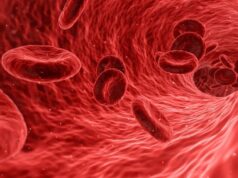
Ehrin J Armstrong (Section of Cardiology, Denver VA Medical Center and University of Colorado School of Medicine, Aurora, USA) and others report in JACC: Cardiovascular Interventions that the risk of major adverse cardiac events (MACE) after non-cardiac surgery is significantly increased among patients with incomplete revascularisation post percutaneous coronary intervention (PCI). They add that the risk of postoperative myocardial infarction increases with each additional vessel with incomplete revascularisation.
Noting that previous studies have suggested an association between incomplete revascularisation after PCI and MACE, Armstrong et al comment that residual ischaemia and incomplete revascularisation “may similarly represent significant risk factors for patients undergoing surgery”. However, they add prevalence and outcomes of patients with incomplete revascularisation undergoing non-cardiac surgery is “not well described”. Therefore in this study, which was presented as a poster at the 2016 American Heart Association (AHA) scientific sessions (12–16 November, New Orleans, USA), the authors assessed the risk of MACE in post PCI patients with incomplete revascularisation undergoing non-cardiac surgery compared with that of patients with complete revascularisation.
Using data from a (US) national cohort of veterans undergoing non-cardiac surgery within two years of PCI, Armstrong et al identified 12,486 patients (all without a history of coronary artery bypass grafting) who underwent PCI and subsequently non-cardiac surgery. Of these, 4,332 (34.7%) had incomplete revascularisation—defined as, the authors state, “the presence of a ≥50% lesion in the left main coronary artery or ≥70% stenosis in another major epicardial coronary artery ≥2mm in diameter at the conclusion of the PCI”.
There were significant differences in the baseline characteristics between patients with incomplete revascularisation and those without, with incomplete revascularisation patients more likely to have had a myocardial infarction in the prior six months, a history of congestive heart failure, and more likely to have diabetes. “Patients with incomplete revascularisation were also slightly more likely to have been treated for an acute coronary syndrome,” Armstrong et al report. They add that patients with incomplete revascularisation were “on average treated with more coronary artery stents and were more likely to have an overall treatment length >30mm, suggesting a greater burden of atherosclerotic disease among the patients who had incomplete revascularisation”.
Patients with incomplete revascularisation had a unadjusted 19% increased risk of MACE at 30 days compared with those with complete revascularisation. The authors state that among the components of MACE, myocardial infarction “appears to contribute the most with a 37% increased risk of postoperative myocardial infarction among patients with incomplete revascularisation”. Furthermore, they found that there was “a significant relationship” between the number of unrevascularised vessels and the risk of postoperative adverse outcomes. “When examined as a continuous variable, there was a 17% increase in the odds of postoperative myocardial infarction for every additional vessel with residual stenosis,” Armstrong et al explain.
After multivariate adjustment for patient and procedural risk factors, a significant interaction was observed between time of PCI and the risk of postoperative events. Among patients who underwent non-cardiac surgery less than six weeks after PCI, patients with incomplete revascularisation had an adjusted odds ratio of 1.84 for MACE. The adjusted risk of MACE was also increased in incomplete revascularisation patients who underwent surgery between one and two years after the PCI but not in those who underwent surgery between six week and one year post PCI. The authors note that previous studies have found that the majority of the perioperative risk is attributable to the first six months post PCI and, therefore, “Patients with incomplete revascularisation, who represent a high-risk subgroup of such patients, should also have surgery delayed for at least six weeks and ideally six months post PCI based on our findings.”
According to Armstrong et al, current guidelines have “de-emphasised” the role of routine stress testing or evaluation for underlying ischaemia in the absence of symptoms but state “our data suggest that risk stratification using cardiac stress testing in a select subset of patients with known residual angiographic stenoses may be a way to impact postoperative mortality”. They add that if such patients are found to have residual ischaemia, “a decision could be made regarding intensification of medical therapy vs. further revascularisation prior to surgery.”
Armstrong told Cardiovascular News: “While our results are observational in nature, the association of incomplete revascularisation with an increased risk of adverse outcomes after non-cardiac surgery suggests a potential role for further risk stratification. For example, it may be reasonable to more closely assess pre-procedural risk stratification in such patients. In cases where there is a large territory or residual ischaemia or multiple unrevascularised vessels, consideration could be given to further revascularisation prior to an elective surgery.”










